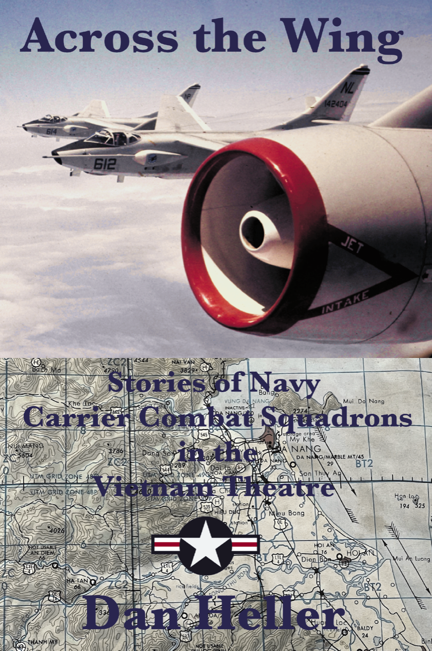Thanks goes to RADM Rupe Owens for this edition of:
Mighty Thunder – Vietnam Flying Stories Heard at Happy Hour
“Introducing the Intruder to Rolling Thunder”
On August 10, 1966, VA-65 flying from Connie, struck the Uong Bi TPP with a coordinated strike of four A6’s. The squadron used a unique tactic that pointed up the flexibility of the all-weather attack system The, as executed, put the four A6’s inbound to the target for a simultaneous target time. Yes, they were all at, or below, 500 feet, at night. The tactic was employed in recognition of the several aircraft that had been lost attaching the power plan. A sister squadron lost at least two A6’s there on the previous cruise. Air Force had suffered similar losses earlier. So, the method to split the defenses by attacking from various headings and arriving at bomb release at the same time was envisioned to allow a successful ingress and egress for the attach. At bomb release, the pilots executed a 60 degrees banked, 2G level right turn to an acceptable egress heading During the run-in, three of the A6’s experienced moderate defensive AAA but that was during the enroute portion, on the wings level run-into bomb release, there was very little in the way of AAA defenses. CTF 77 and CinPac forwarded a congratulatory message for the destruction of the TPP confirmation the following day from the RA-5C BDA.
I was #3 on the flight, Bob Mandeville was the flight leader, Jim Joyner (first cruise) and Nels Gillette were the other pilots. B/N’s were Nellie Dye, USMC exchange, Roger Smith, Ro Selamn and Cec Anderson. Selman and Anderson were first tour, first cruise nuggets. Dye was well experienced from his duties as a “Cottonpicker” Marine electronic bird and Smitty was an ex-A3 B/N. My track was a beam Haiphong at 600 feet. Then NVN used their heavy AAA to interfere with our plans – but, using the trusty radar altimeter, showing a somewhat uncomfortable 50 feet AGL, the radar trackers lost us and those heavy explosions we were hearing in the cockpit moved well behind us. Nelllie’s comment during egress, “looked like they all hit at the same time. He and Mandy took out a large electrical grid just West of generator hall. Smitty’s 5x2000LDGP bombs entered the South end of the generator hall and Joyner/Selman’s 5×2000 LDGR entered the North end of the hall. Gillette/Anderson laid a 28 x 500 pound LDGPs string centered across the hall East to West. We used the tactic often – but primarily with two A-6’s. The Uong Bi was meant to demonstrate how the A6 could and should be used. Mandy was credited with ‘saving the A6’ from being denied funding. CNAP, et al;, had been warned that, due to the lackluster first two A6 deployments, the O5 and DOD budgeteers were looking for dollars and the A4 looked mighty cheap next to the expensive A6 – if the Intruder could not perform the all-weather mission. Truth be told, the first two A6 squadrons simply lacked the experience and the Staffs didn’t know what to do with the A6. So, it became a bigger, fully loaded A4.



Bill Tschudy was my class leader, Class 45-61. And a real leader he was
Having made the first deployment with fully operational A-6’s of VA-75 Sunday Punchers aboard USS Independence CVA-62 from May to December 1965 as the Maintenance Officer of VA-86, an A-4E squadron, I can attest to the misuse of the A-6’s as they struggled to integrate into their mission roll. The weapon’s they carried were not tested properly and some detonated under the a/c upon release utilizing electrical arming vs. mechanical. The pilot’s did the very best they could with the mission planning, but the results were unremarkable for the expense and operation of the aircraft. It was a special tragedy when Commander Jerry Denton and B/N Bill Tschudy were shot down while leading an Alpha Strike on the Thanh Hoa Bridge in N. Vietnam. It took a year before the A-6 was used properly on low level night or bad weather missions with great success.